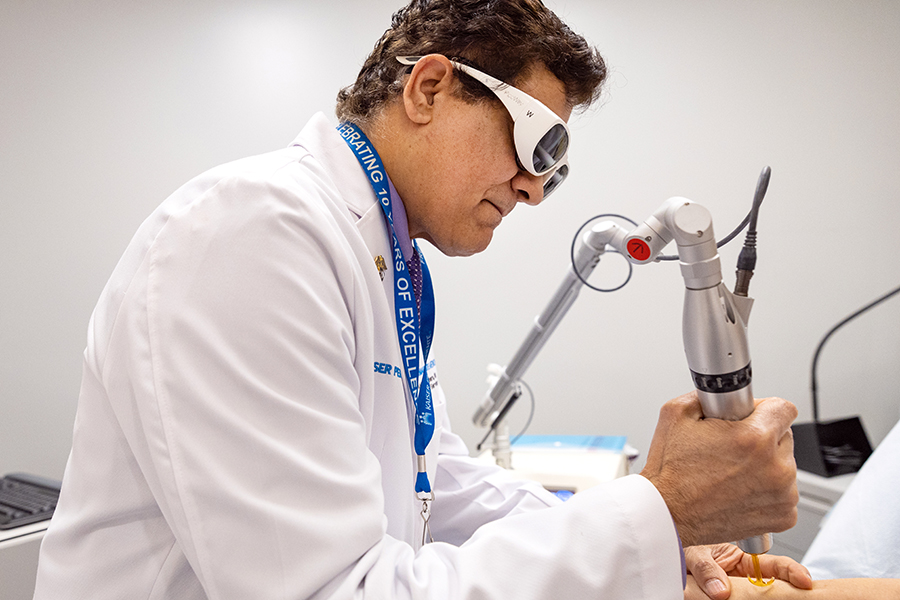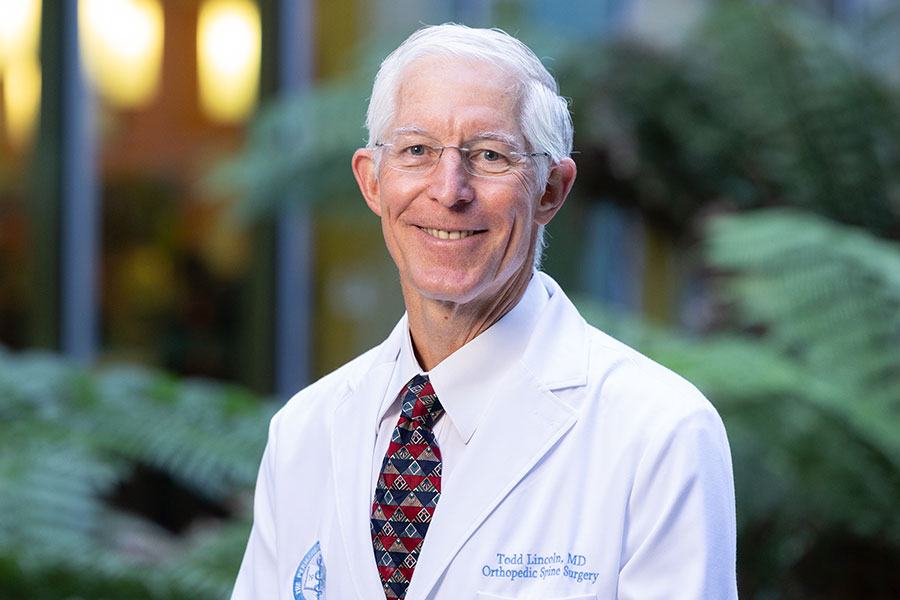Inside KP-October 7, 2017
In a second-floor classroom at the Kaiser Permanente Folsom Medical Offices, 16 people are gathered to learn how to better manage their chronic pain.
There is a young woman in a neck brace, and an older man using a walker. Everyone is a Kaiser Permanente member who has been in pain for 6 months or longer, suffering from conditions such as lower back pain, neck pain, knee pain, headache, and fibromyalgia.
They are taking a 2 ½ hour pain management workshop that meets weekly for 4 weeks and is led by pain psychologist Les Aria, PhD, and pain physical therapist Kristi Sundahl, PT. Together they teach mindful-based movement and mental skills to help patients calm their nervous systems and relate to their pain in a new way.
“When you have pain for more than 6 months, it puts you on high alert,” explained Dr. Aria. “Your pain is no longer an issue with your back or your knee — it becomes a nervous system problem.”
The workshops are offered through Kaiser Permanente North Valley/Sacramento area’s Comprehensive Pain Management Department, which also offers acupuncture, biofeedback, health coaching, and an opioid safety program. There are similar chronic pain management programs at every Kaiser Permanente Medical Center in Northern California.
Dr. Aria tells the group in Folsom that their thoughts and emotions have a strong influence over how they experience physical pain because thoughts, emotions, and pain are all processed in the same area of the brain. The workshop aims to help patients dial down the thoughts and emotions that influence how they perceive pain, so they can suffer less and improve their quality of life.
Deactivating the Fight or Flight Response
In the mindful movement portion of the workshop, Kristi Sundahl teaches patients practical techniques such as how to engage their core, move with less effort and more ease, and comfortably get out of a chair. She also practices a series of Qigong exercises with the class, which she says will help remind their bodies of “what a calm nervous system feels like.”
Every session also includes practice in mindful meditation, which Dr. Aria describes as “simply focusing on your breath.”
“You feel the physical sensations of your relaxed deep breathing, the rise and fall of your belly, and noticing these things gives your brain focus. Should something take your attention away, notice it, say thank you, and then go back to your breath.”
Research shows that a regular mindful meditation practice deactivates the amygdala (the part of your brain that’s associated with fear, emotion, and the fight or flight response) and it activates the pre-frontal cortex (associated with awareness, concentration, and decision-making).
When patients are in pain, Dr. Aria asks them to breathe calmly and mindfully while focusing on the middle of their pain.
“Once they locate it and do nothing else but breathe in and out gently for 2 to 3 minutes, it’s unbelievable what happens,” he said. “It’s tough work, but for most people there’s a change for the better, and the more they practice the more relief they get.”
‘This Program Saved My Life’
Dr. Aria estimates that about 40 percent of patients who take the series of workshops and 4 aftercare sessions get significant relief. Among them are 53-year old Jaqueline Turos and 65-year-old Ricky Combs.
Combs, who used to own a landscaping business, suffers pain from fibromyalgia, arthritis, disc pain, and neuropathy. He said he’s received so much pain relief from the mindful meditation that he’s working on a book about his experience.
“I tell people that this program saved my life. I wish that everybody who has chronic pain could take it,” he said.
Turos, a business analyst who suffered debilitating chronic neck pain for years, said she’s now almost pain free. She credits the skills and knowledge she gained in the workshop.
“The class is not a pill,” Turos said. “It takes a certain amount of committed discipline. But I am so grateful to have had the chance to learn to help myself. I don’t know what else to say, except thank you.”
This story originally appeared in Inside KP.
Read part 1 of this series, A Mindful Approach to Chronic Pain Management.






